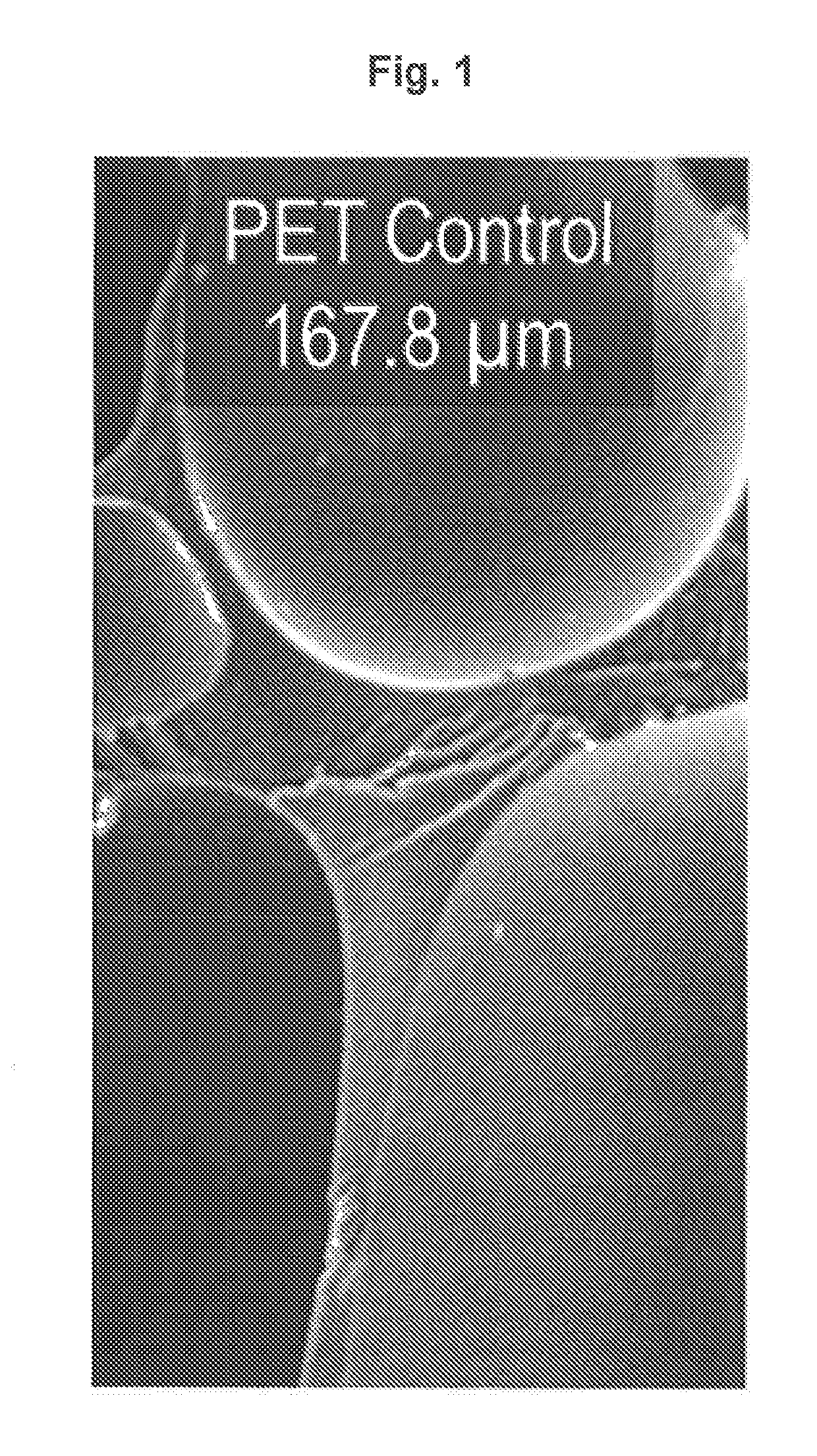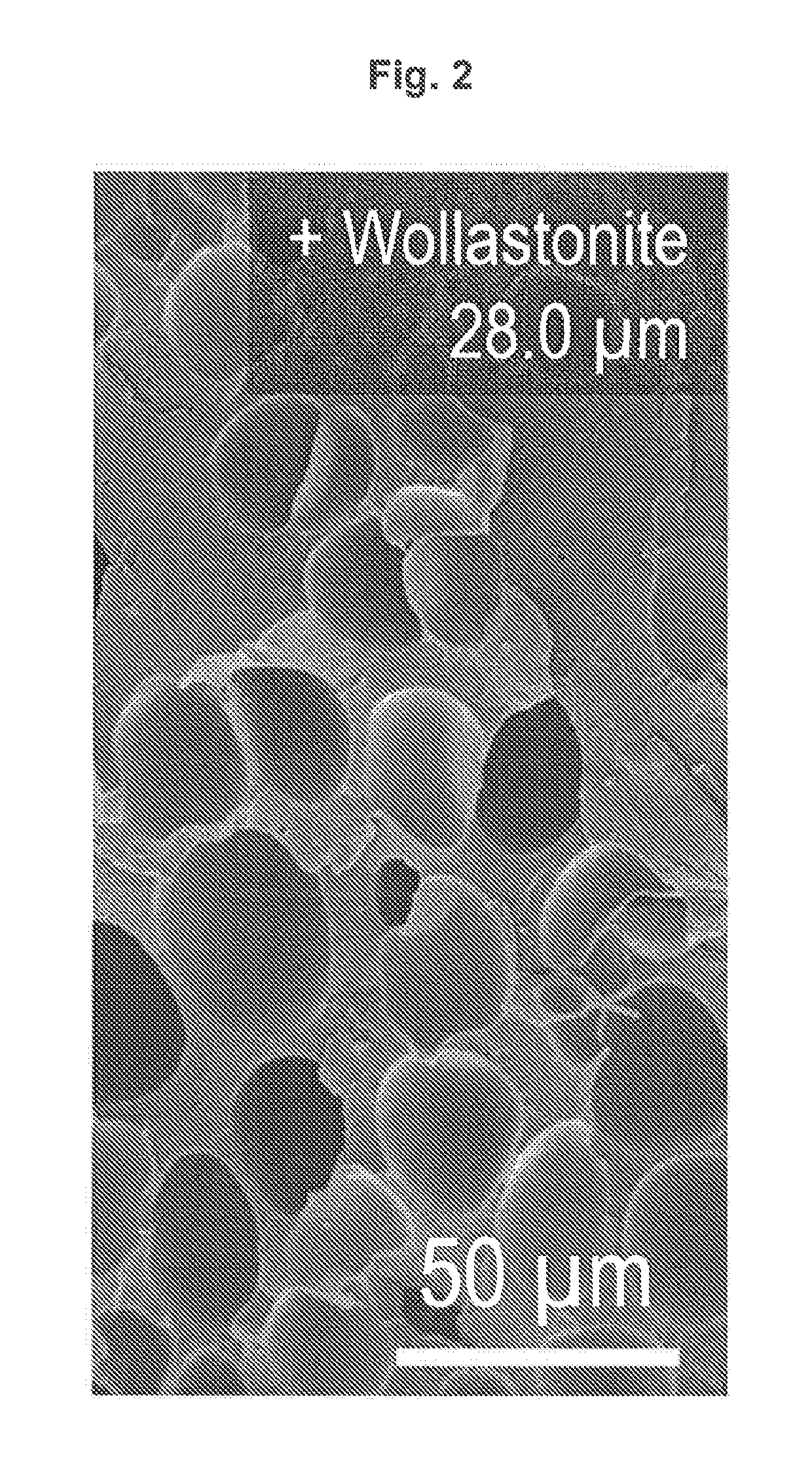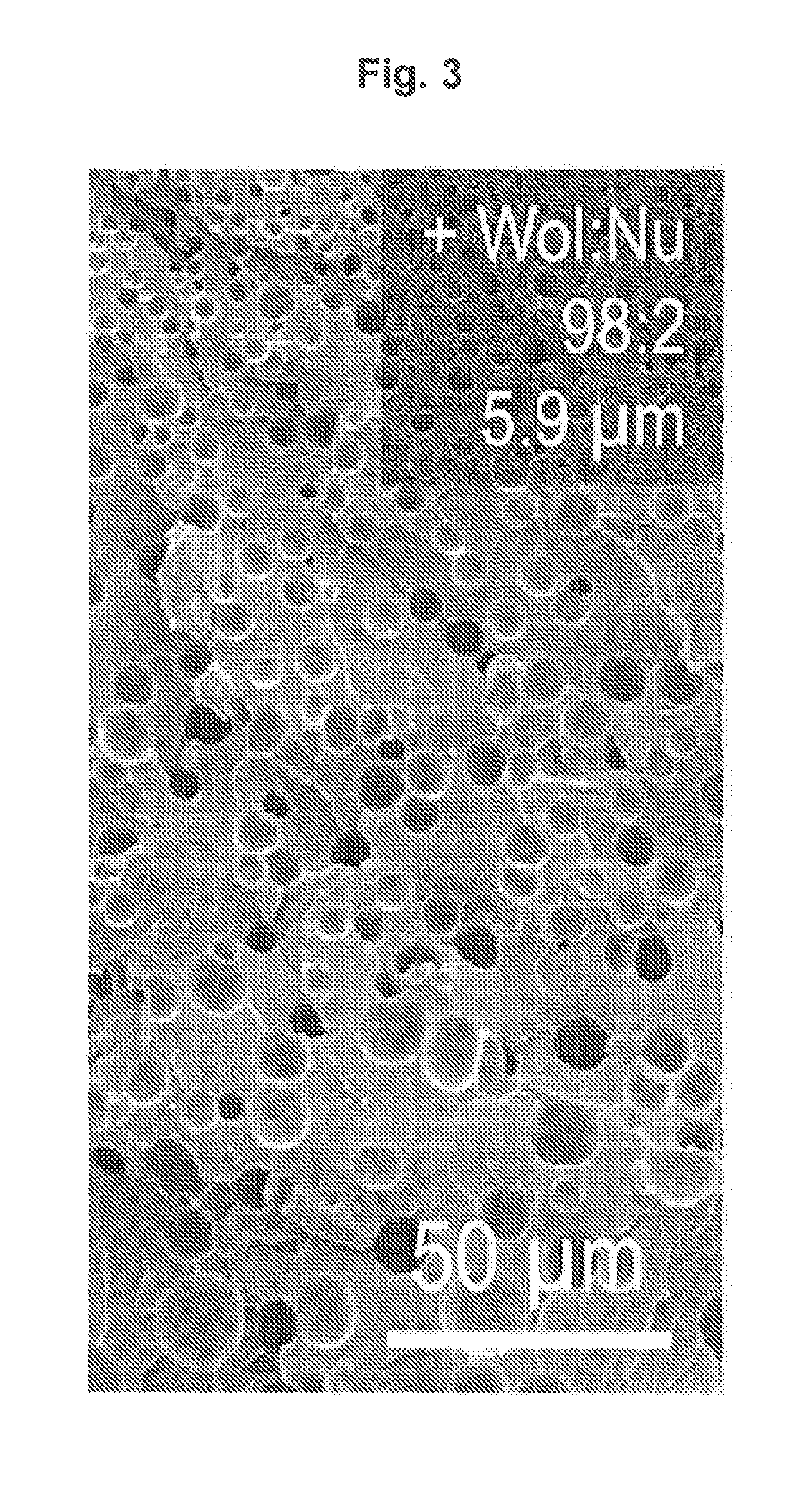Controlled polymer foaming using a hybrid nucleating agent formed from a mineral and an organic nucleating agent
a nucleating agent and nucleating agent technology, applied in the field of materials technology, can solve the problems of sacrificing mechanical properties, reducing weight, and energy-unfavorable process for bubble formation, and achieve the effect of greater control over morphology and resulting properties
- Summary
- Abstract
- Description
- Claims
- Application Information
AI Technical Summary
Benefits of technology
Problems solved by technology
Method used
Image
Examples
embodiments
[0127]Embodiment [1] of the present disclosure relates to a process of producing a polymer foam, the process comprising: dispersing an organic nucleating agent in a dispersing medium to obtain an additive dispersion; contacting the additive dispersion with a mineral nucleating agent to obtain a hybrid nucleating agent comprising the organic nucleating agent localized on at least a portion of a surface of the mineral nucleating agent; and contacting the hybrid nucleating agent with a polymer in the presence of a foaming agent to obtain a polymer foam.
[0128]Embodiment [2] of the present disclosure relates to the process of Embodiment [1], wherein a mass ratio of the organic nucleating agent to the mineral nucleating agent ranges from about 0.001:99.999 to about 50:50.
[0129]Embodiment [3] of the present disclosure relates to the process of Embodiment [1] or Embodiment [2], wherein a mass ratio of the organic nucleating agent to the mineral nucleating agent ranges from about 0.1:99.9 to...
examples
[0229]The following examples are provided for illustration purposes only and in no way limit the scope of the present disclosure. Embodiments of the present disclosure employ the use of different or additional components such as other organic nucleating agents, other mineral nucleating agents, other polymers and other materials capable of being foamed, other foaming agents, as well as additional components and additives. Embodiments of the present disclosure may also employ the use of different process conditions than the conditions illustrated below.
Study Overview
[0230]In the examples illustrated below, the cell size and distribution within polymer foams was controlled by foaming a polyester polymer in the presence of a hybrid nucleating agent composed of an organic nucleating agent localized on the surface of a mineral nucleating agent. Comparison studies illustrate that use of the hybrid nucleating agent as a cellular nucleating agent leads to a surprising amplification of the ce...
PUM
| Property | Measurement | Unit |
|---|---|---|
| average cell diameter | aaaaa | aaaaa |
| size | aaaaa | aaaaa |
| median particle size | aaaaa | aaaaa |
Abstract
Description
Claims
Application Information
 Login to View More
Login to View More - R&D
- Intellectual Property
- Life Sciences
- Materials
- Tech Scout
- Unparalleled Data Quality
- Higher Quality Content
- 60% Fewer Hallucinations
Browse by: Latest US Patents, China's latest patents, Technical Efficacy Thesaurus, Application Domain, Technology Topic, Popular Technical Reports.
© 2025 PatSnap. All rights reserved.Legal|Privacy policy|Modern Slavery Act Transparency Statement|Sitemap|About US| Contact US: help@patsnap.com



